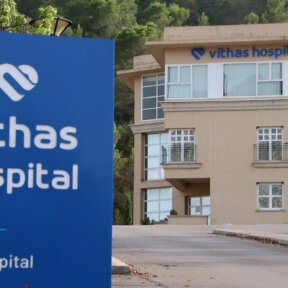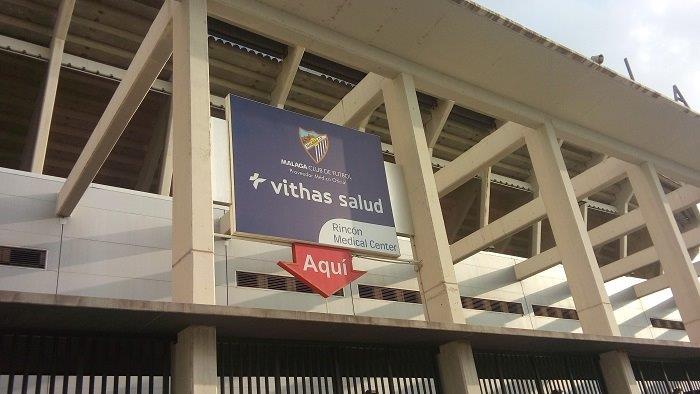What is radiodiagnostics?
Diagnostic imaging specialists are doctors that are trained to diagnose and treat diseases and injuries using medical imaging techniques, the main ones being X-rays, computed tomography (CT), magnetic resonance imaging (MRI) and ultrasound.
One of the most rewarding aspects of radiology is its impact on patient care. The key to treating diseases — and possibly the most complex step — is making an accurate diagnosis, without which treatment can never be adequate. In the vast majority of medical specialities, radiological examinations are the basis for diagnosing diseases. Radiologists inform the patient’s doctor about the disease he or she has or the extent of the disease, or issues a differential diagnosis and recommends new scans to fine-tune the diagnosis.
Radiology often requires the use of several imaging techniques, either jointly or sequentially, and the radiologist is in charge of selecting the most appropriate techniques. In modern medicine, doctors rely on radiologists for more than 80% of the decisions they make. Radiologists are key to assessing the extent of a disease. This is particularly important in malignant tumours because the degree of extension usually determines the treatment. However, radiology is also essential in other specialities. For example, to advise surgeons on the most appropriate technique to use in surgical procedures, or to assess the response to different types of treatment and their outcome.
Nowadays, radiologists are not just specialists who interpret images, but another physician or medical consultant, who not only diagnoses, but also performs image-guided minimally invasive interventions. Radiologists are in charge of preparing radiology reports and, where appropriate, performing treatment techniques, so it’s important you get to know your radiologist so that they can clarify your concerns.
Main diagnostic resources and technology
- Conventional radiology.
- Mammogram.
- Ultrasound.
- Computed tomography (CT) scan.
- Magnetic resonance imaging (MRI).
- Fluoroscopy.
- Angiography.
Main treatments
Radiologists can also treat diseases. Interventional radiologists are subspecialised radiologists who perform minimally invasive treatments using imaging techniques to guide procedures. These diagnostic/therapeutic procedures have become the primary method of treatment for multiple conditions, offering less risk, less pain and less recovery time compared to open surgery.
Interventional radiologists use X-rays, CT scans, ultrasounds and fluoroscopy to guide small instruments, such as catheters, through blood vessels and organs to treat a wide variety of diseases. Examples of treatments performed by interventional radiologists include angioplasty, stent placement, thrombolysis, embolisation, radiofrequency ablation and biopsies. These minimally invasive treatments can cure or alleviate symptoms of vascular disease, stroke, uterine fibroids and cancer.
One of the fields in which interventional radiology has experienced the greatest growth is oncology. Treatments such as arterial injection of chemotherapeutic or embolic agents (chemoembolisation) or removal of tumour tissue by local application of thermal energy (radiofrequency ablation, microwave ablation or cryoablation) are part of the standard therapeutic algorithms of many tumours.
Areas of specialisation
- Neuroradiology.
- Abdominal radiology.
- Breast radiology.
- Musculoskeletal radiology.
- Paediatric radiology.
- Thoracic radiology.
- Vascular and interventional radiology.
FAQs
Are tests done under general anaesthesia?
Usually patients aren’t put to sleep for radiological tests. The machines used are designed for you to feel comfortable. However, because they require you to stay still, sometimes you may be given a sedative or medication to calm your nerves.
How is the contrast administered?
Some diagnostic imaging tests involve introducing a drug into the body called contrast. These substances can be administered intravenously, by pricking the vein in an arm; orally, by drinking it with a liquid; or rectally, by an enema.
Can I get an allergic reaction to contrast?
Some people may have a reaction to contrast. In most cases, it develops with mild symptoms such as itching, feeling hot or redness, and isn’t dangerous. Before you have the test, your healthcare provider will ask you whether you have any allergies so that appropriate action can be taken.
How is the contrast eliminated from the body?
It depends on the route of administration. If administered orally, it is eliminated through the faeces; if it is administered intravenously, it is eliminated through the urine. After the exam you will need to take plenty of fluids, water or juice, especially if barium has been used, to encourage the natural removal of the contrast.
Can I get an MRI if I’m pregnant or breastfeeding?
Since this is a relatively new test, there are no known possible adverse effects on the foetus, so it is advisable not to undergo an MRI if it is not strictly necessary according to medical criteria, especially in the first trimester.
Can I wear metal when I have an MRI?
Because MRI uses strong magnetic fields, all metallic objects must be removed before entering the MRI room. Certain fixed metal objects such as dentures, orthodontics or nails and screws can be worn during an MRI but will create an image alteration (“artefact”) that will limit the assessment. In general, if you have an implanted device such as a cochlear implant, stent, mechanical valves or pacemaker, you will not be able to undergo an MRI, although the most modern ones may be compatible provided that certain precautionary measures are taken. Tell your doctor if you have any of these devices.
What will I experience during an MRI scan?
The procedure is not painful and you won’t feel the magnetic field. However, the MRI scanner makes loud noises that can be bothersome, so the technician will likely offer you earplugs or a special headset. During the examination, it is important you remain still for the images to be taken correctly. Some patients may feel uncomfortable having to remain still in certain positions.
Some patients may also experience a feeling of confinement, which can range from mild discomfort to claustrophobia. However, you should know that you will be in contact with the technician at all times. You will be given a call button which you will hold in your hand for the duration of the scan in case you feel any discomfort. It is important that you are as relaxed as possible and know that you are not in danger. Your collaboration is essential to the success of the examination and to arrive at an accurate diagnosis.















